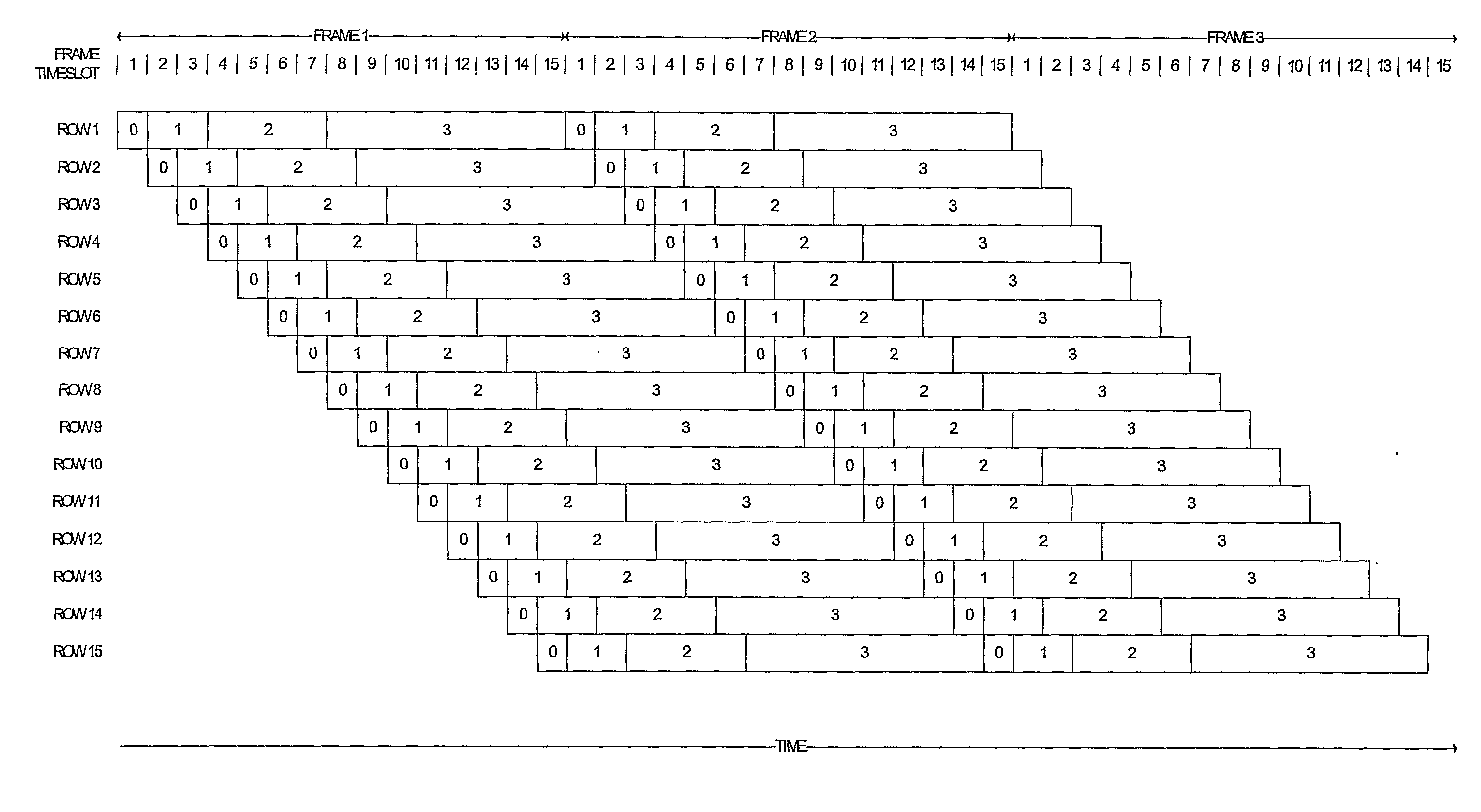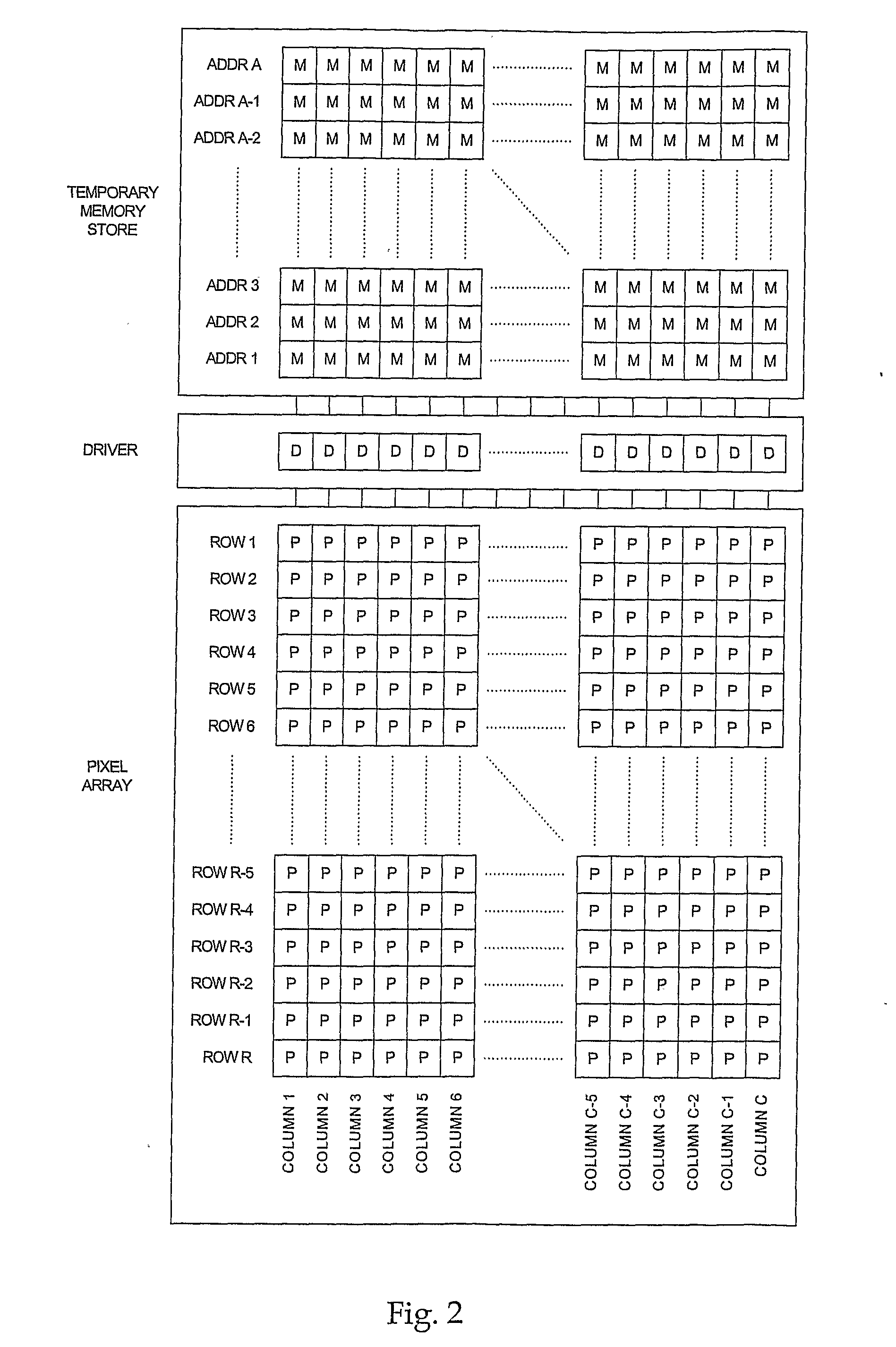Temporary Memory Circuits for Matrix Display Device
- Summary
- Abstract
- Description
- Claims
- Application Information
AI Technical Summary
Benefits of technology
Problems solved by technology
Method used
Image
Examples
Embodiment Construction
[0020]FIG. 2 shows an electronic display which comprises a pixel array 1, a temporary memory store 2, and a driver block 3. The pixel array consists of an array of pixels P with R rows and C columns. Each pixel P consists of one or more memory storage elements and an electrode driver. The pixel requires a multiplexer if the pixel has more than one memory element so that the appropriate memory element can be selected and passed as a control signal to the pixel electrode driver. The pixel electrode driver, in turn, provides a signal to control the pixel's electrode to emit or modulate light.
[0021]The temporary memory store 2 consists of a plurality of memory elements. These memory elements may be arranged in rows, designated ADDR1 to ADDR A, each with C memory elements. The number of rows A in the temporary memory store depends on the required PWM grey level bit depth, and the number of rows in the pixel array. If the required bit depth is N, then it is convenient to partition the tem...
PUM
 Login to View More
Login to View More Abstract
Description
Claims
Application Information
 Login to View More
Login to View More - R&D
- Intellectual Property
- Life Sciences
- Materials
- Tech Scout
- Unparalleled Data Quality
- Higher Quality Content
- 60% Fewer Hallucinations
Browse by: Latest US Patents, China's latest patents, Technical Efficacy Thesaurus, Application Domain, Technology Topic, Popular Technical Reports.
© 2025 PatSnap. All rights reserved.Legal|Privacy policy|Modern Slavery Act Transparency Statement|Sitemap|About US| Contact US: help@patsnap.com



